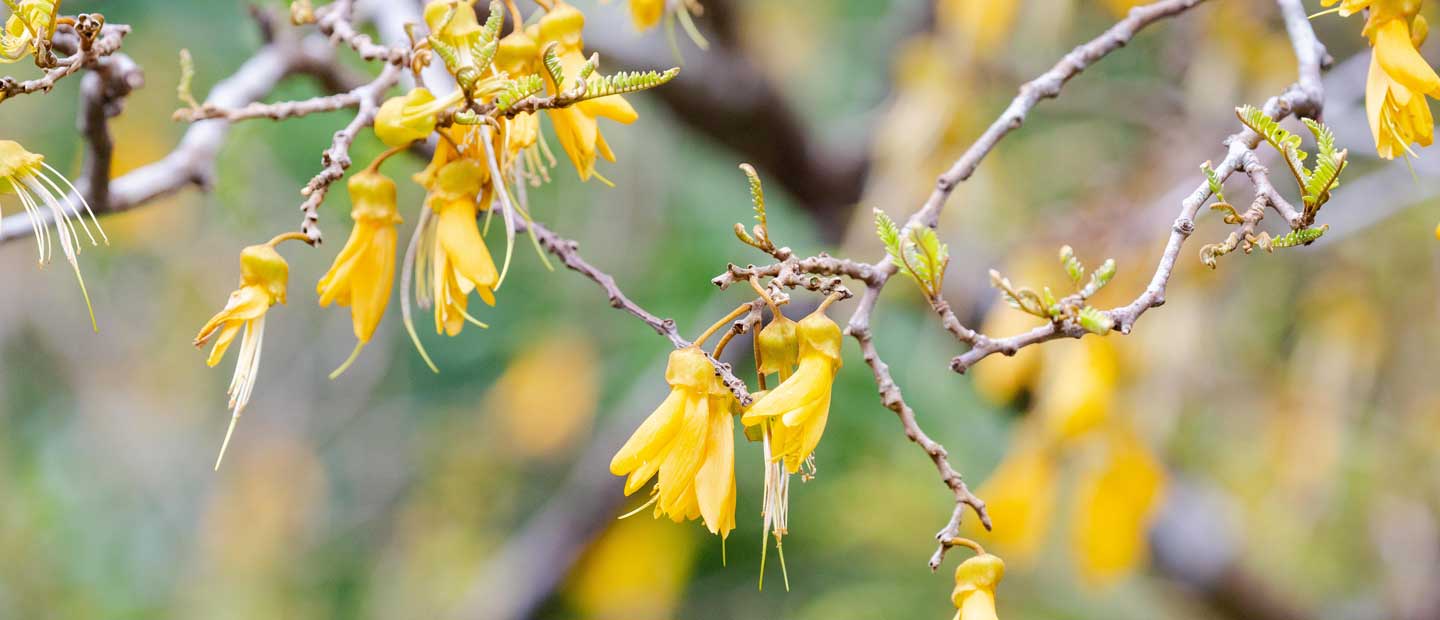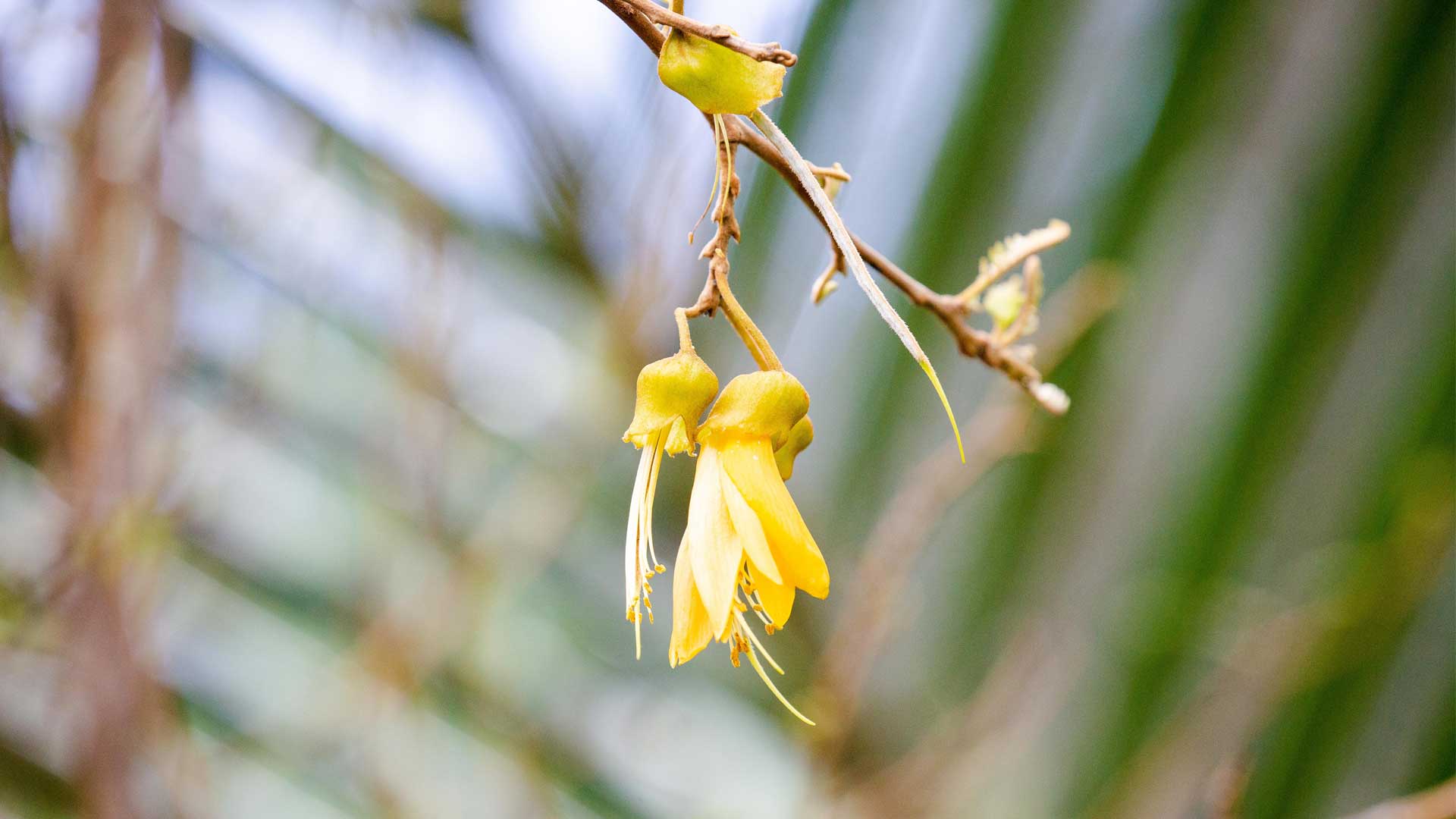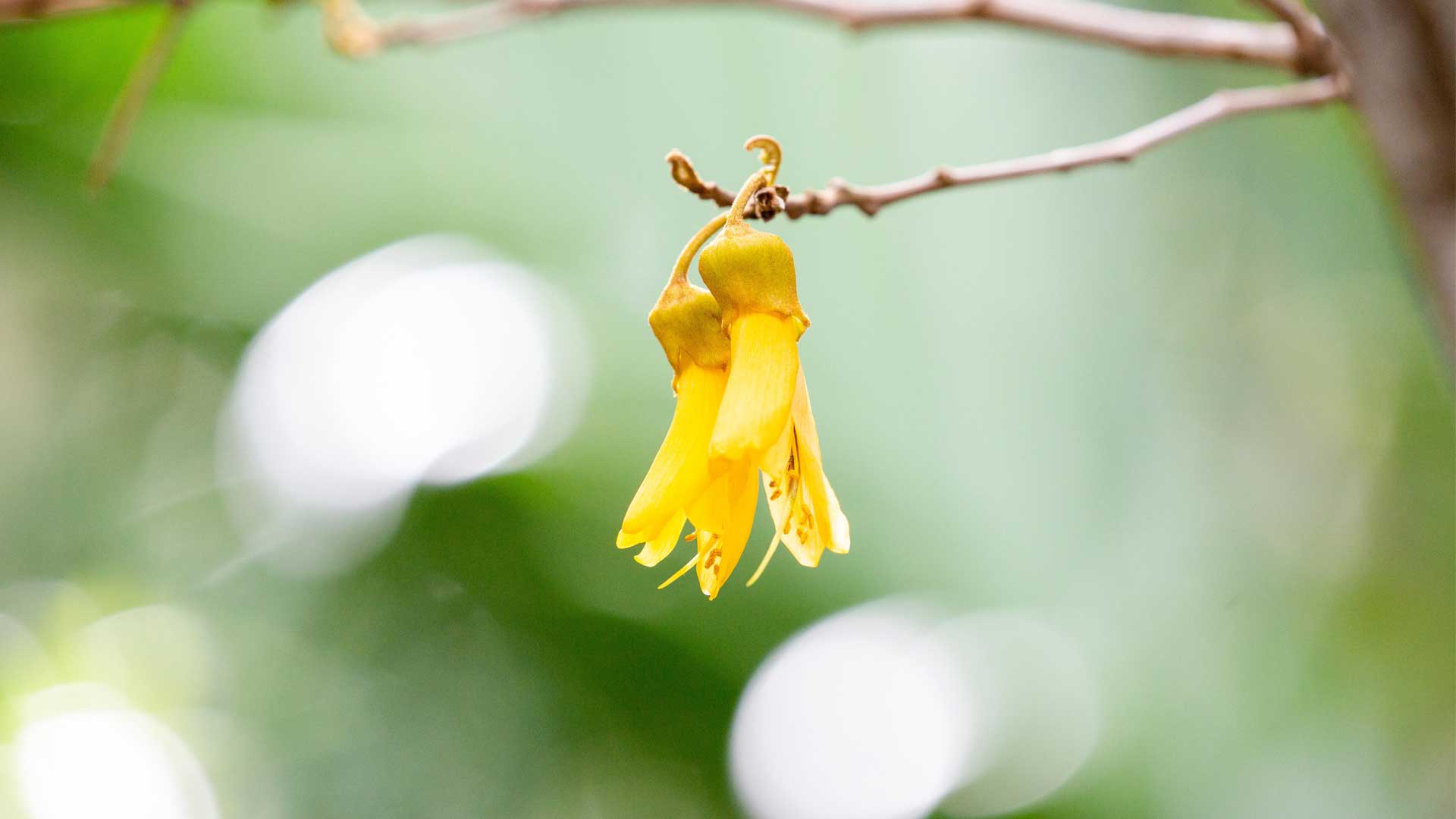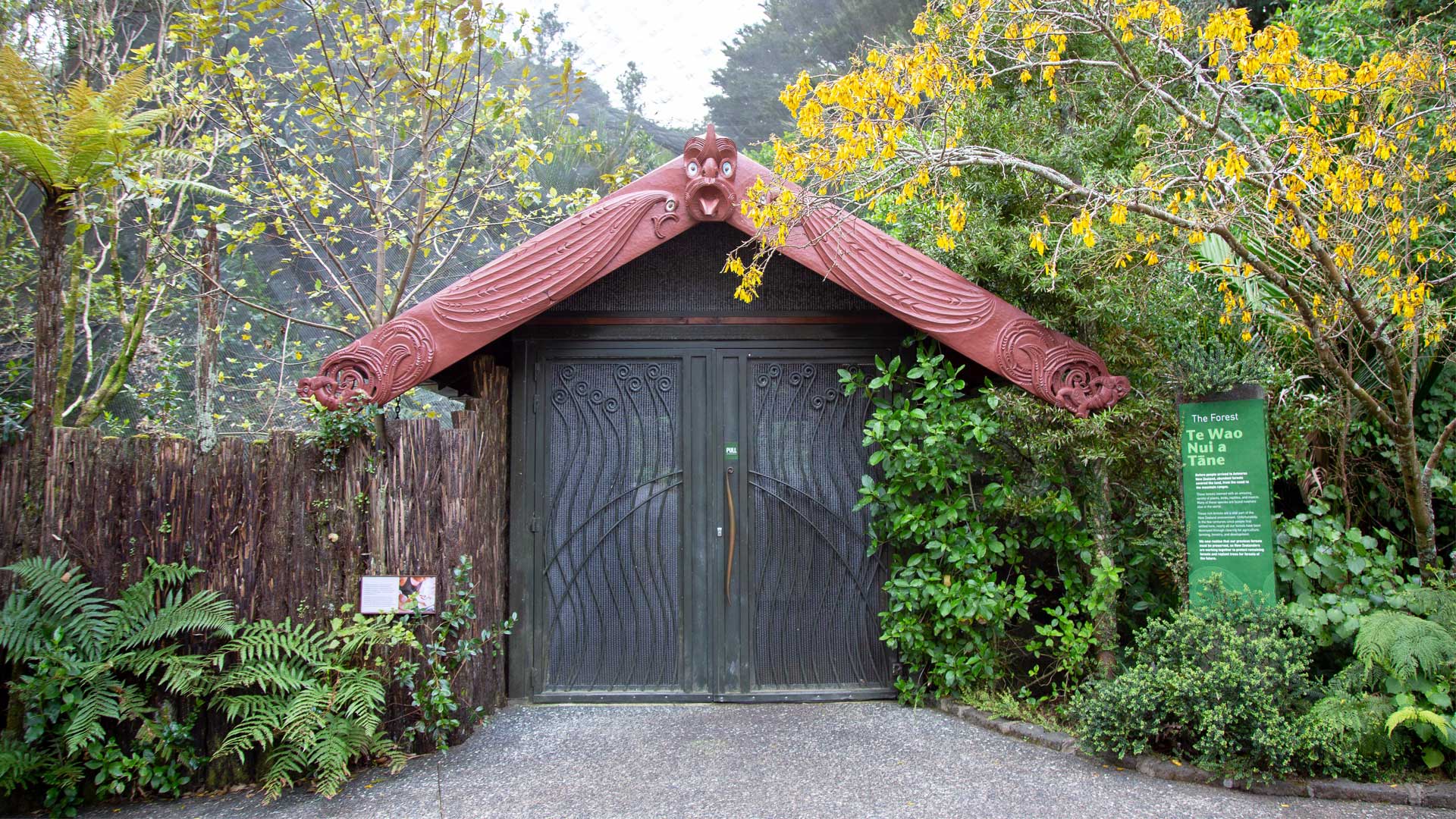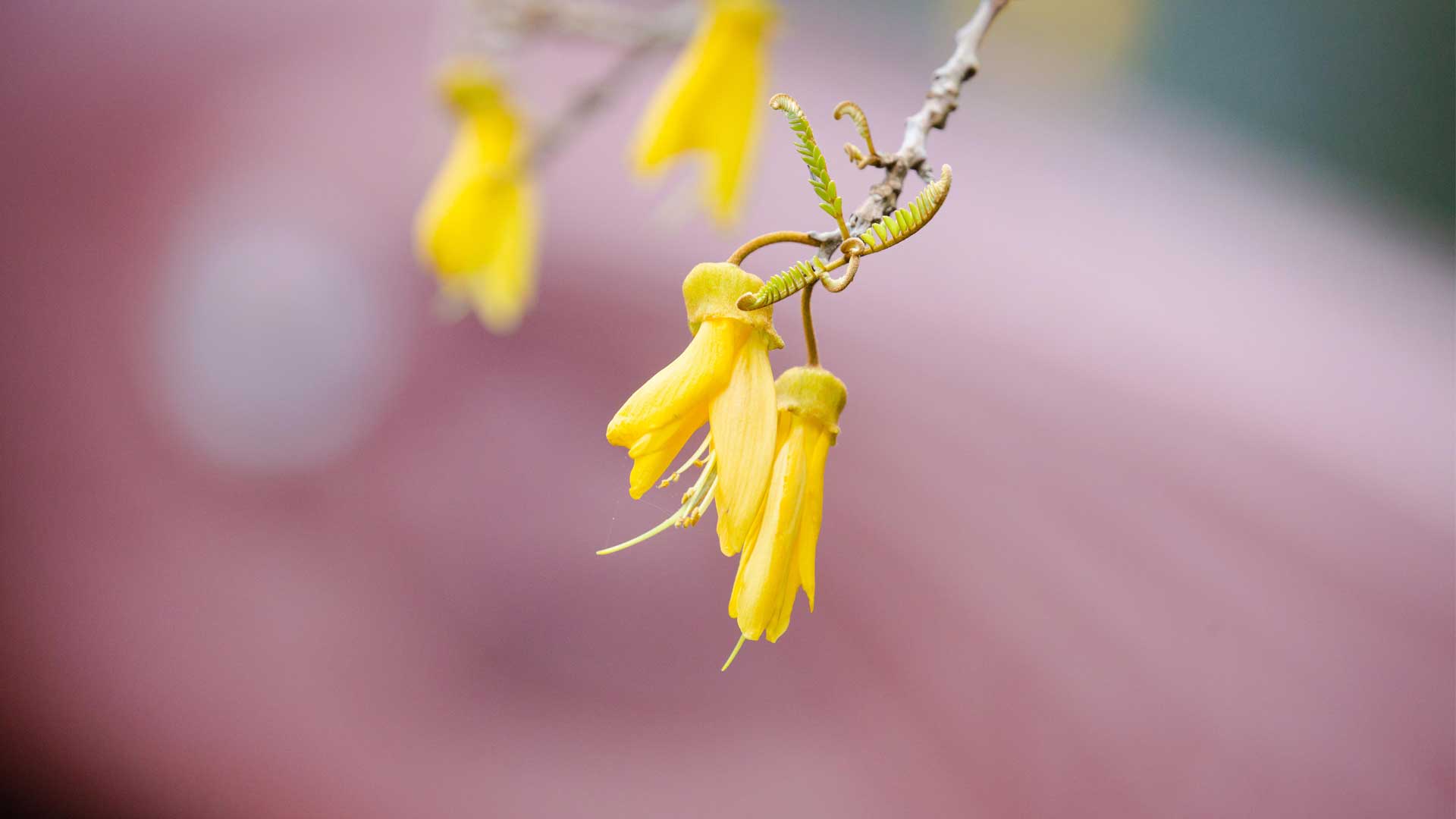You might be surprised to learn that there are eight different species of Sophora (kōwhai) in Aotearoa, each having different growth habits, leaves, flowers, flowering times, and have acclimatised to diverse habitats throughout the country.
A great source of kai for our nectar-eating birds, the kōwhai blooms through July to November and will be frequented by tui, korimako (bellbird), kākā and kererū. As many of you will know, the kōwhai flower is especially desirable to tui – who will fly great distances to sample its delicious nectar. But it’s the hungry kererū, Aotearoa’s Bird of the Year 2018, that loves to feast on kōwhai leaves and tender young leaf shoots.
As our unofficial national tree, kōwhai also carries a great cultural significance in Aotearoa’s history. Māori make use of the bark, flowers, leaves and juice for traditional rongoa (medicine). Kōwhai bark can be heated over hot stones to make a drink for treating internal pains, bruises or broken limbs. There is even a special juice wai kōwhai to apply in case of a seal bite!


